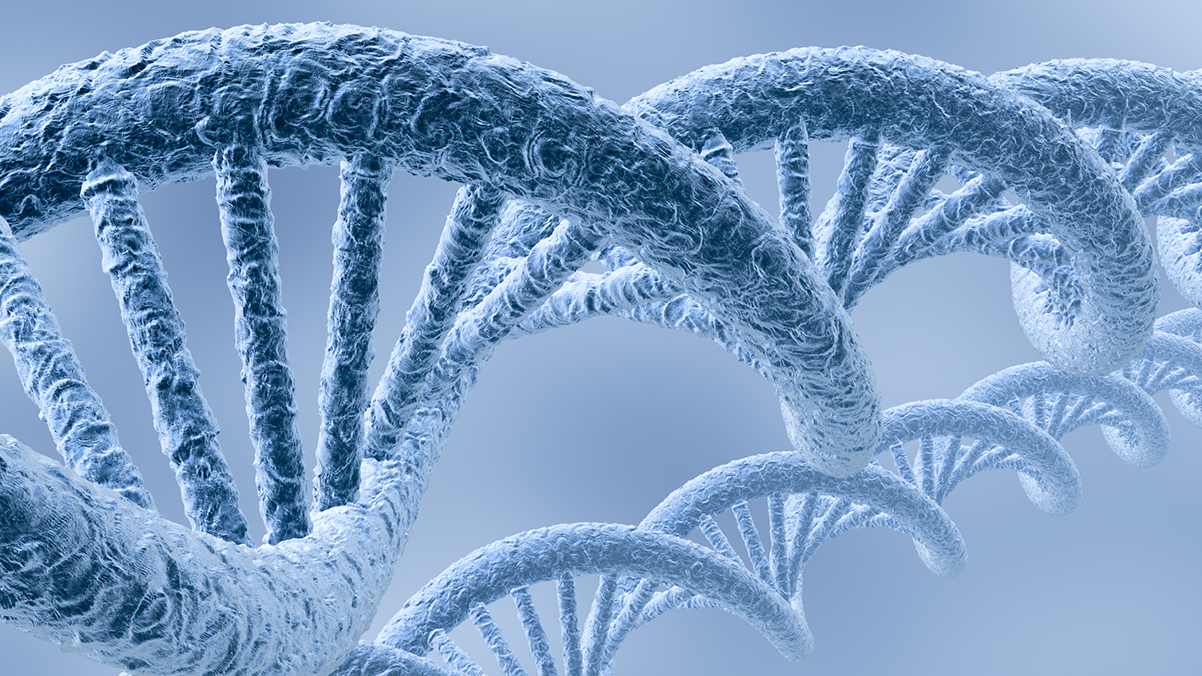
Cancer hijacks the very tools that sustain life.
One process cancer takes hold of is cell division – when DNA is copied and passed on into new cells. So our researchers are striving to understand cell division in order to combat cancer.
And this means that our research sheds new light not only on cancer: but also on life itself.
‘Reading’ DNA
A new ICR-led study published today in leading journal Nature is our latest to uncover important and previously unknown information about the workings of DNA.
It follows on from several other major ICR studies in recent years that have led to new understandings of basic biological processes.
Led by Dr Alessandro Vannini, the new study furthers our understanding of a protein called the RNA polymerase III complex – which helps to ‘read’ DNA and make transfer RNA, which in turn helps to produce the proteins cells need to live, grow and divide.
Cell division ‘safety catch’
Another recent study, led by our Head of Cancer Biology Professor Jon Pines, found a new ‘safety catch’ that prevents cells from dividing until chromosomes – wound bundles of DNA – are ready in place.
Professor Pines, an expert in cell division, is now using a cutting-edge new microscope, funded in part by supporters of the ICR, in his work to understand cell division.
Scientists have unveiled incredible images of how the DNA code is read and interpreted – revealing new detail about one of the fundamental processes of life. Find out more in our news story.
Targeting the anaphase-promoting complex
Centrosomes are tiny tube-like structures in cells that act as marshals for spindles – protein rails along which DNA is pulled apart when one cell becomes two.
Professor Spiros Linardopolous and his team found a new role for a super-protein called the anaphase-promoting complex (APC/C) in clustering centromeres together in cells that have too many.
Cancer cells have more centrosomes than normal cells, and targeting APC/C with new drugs that affect clustering could be a brand new approach in cancer treatment.
The APC/C was also the focus of another major ICR-led study in Nature, in which scientists pinned down its structure in unprecedented detail.
Another study has found that components of the APC/C wind together in a ‘supra-helix’ structure – not previously found anywhere else in nature.
G1/S transition
The APC/C helps to initiate anaphase, one of the stages of cell division. Dr Chris Bakal’s research team uncovered new information about a different stage, called the G1/S transition, in which cells commit to making new copies of DNA.
This is important in cancer, because the disease can initiate DNA copying without the usual controls.
Understanding the structure of the proteasome
Another key protein complex in cell division is called the proteasome, which acts like a cellular recycling unit. Using pioneering technology called cryo-electron microscopy, our researchers pinned down the structure of the proteasome more clearly than ever before.
Researchers led by our Dr Ed Morris have also established cryo-electron microscopy in cancer research.
The spirit of discovering something brand new – unknown to science – spurs on many of our scientists, as well as their passion for driving forward new treatments for cancer. It’s also why we are the best UK academic research institute in biological sciences, according to the definitive measure of UK research quality.